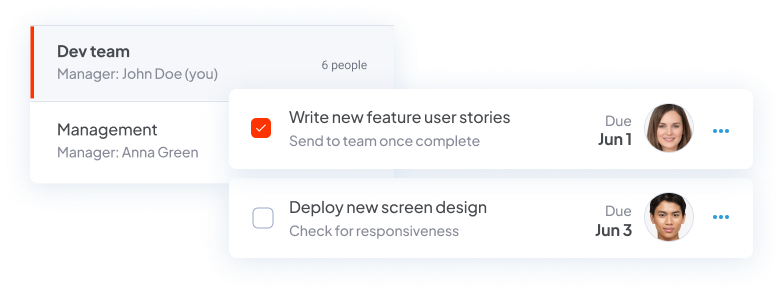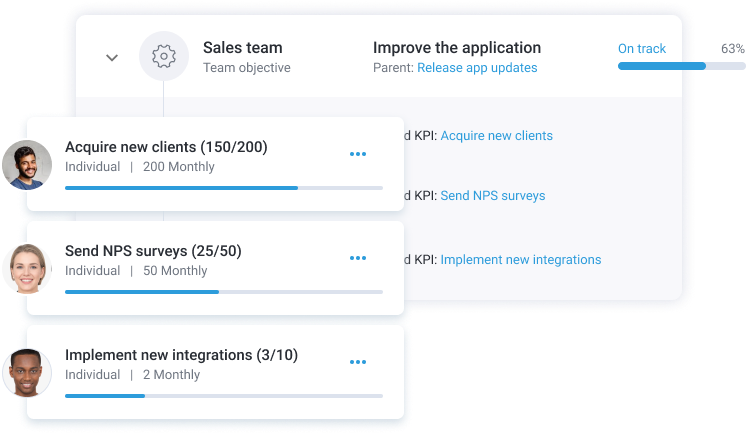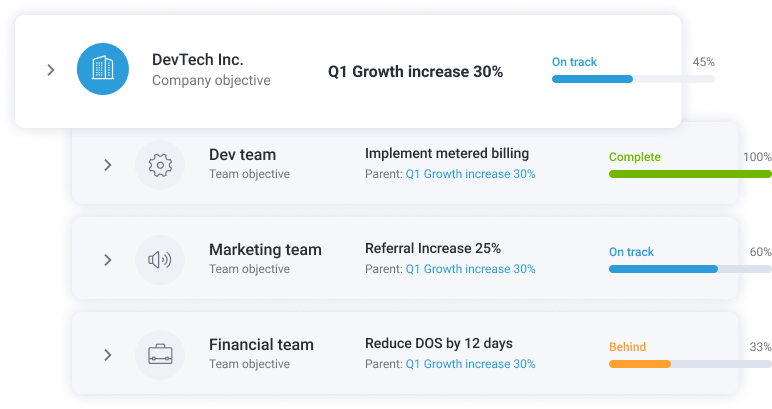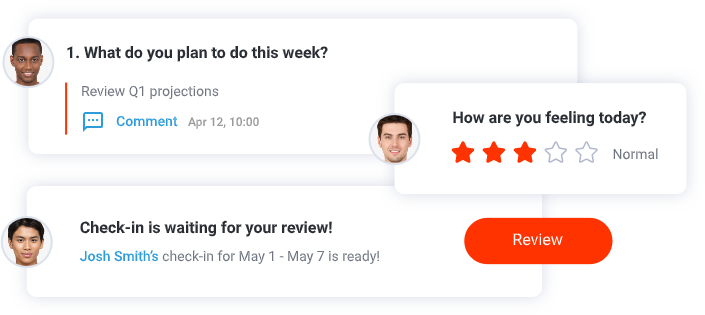Essential Employee Engagement Guide
Intro
There is no question that every organization gets long-lasting advantages and positive effects from high employee engagement; still, companies around the globe struggle when trying to boost employee engagement initiatives. There are several different methods you can use to improve engagement in your organization, and regardless of which ones you implement, the most important thing is to see positive results.
In this employee engagement guide, we want to go through the main aspects of engagement every leader should know to help their employees thrive and unlock great potential that will deliberately help any organization to reach their company’s goals and accomplish business success.
The Global Employee Engagement Index found that though employee engagement is at an all-time high, less than half of surveyed employees report being engaged at their job. Approximately half of Generation Z employees say they’re enthusiastic about work. And the only segment to weigh in at over 50% is the Silent Generation or those born before Baby Boomers.
Although the simple fact that employee engagement is on the rise is a good indicator of companies changing their perspective towards the importance of employee wellness, the numbers are still relatively low… which only indicates that a lot of organizations haven’t still “cracked the code” or are reluctant to change their ways.
The corporate world is constantly evolving, businesses should catch up or they could be facing dark times ahead.
“The definition of insanity is doing the same thing over and over and expecting different results.” - Albert Einstein
What is Employee Engagement?
Nowadays Employee Engagement is a concept that has gained amazing popularity and importance, and it sure deserves it. But, what is employee engagement exactly?
If we look for a definition of employee engagement on the internet, we’d come across a lot of diverse approaches and opinions, from worldwide consultants to every other kind of HR professionals. But we can best define employee engagement as:
“A management concept that focuses on an employee’s emotional attachment towards their job and their professional surroundings, resulting in a higher commitment, productivity and wellbeing.”
But there is so much more to this definition, and we are here to help you understand every aspect of what employee engagement really entails so you can skyrocket your team’s productivity and get your company to new and exciting heights.
Why is Employee Engagement important?
A company with highly engaged employees usually reports higher levels of productivity and positive outcomes.

It’s no secret that happy and engaged employees are more likely to become high performers and loyal employees, and we live in a world where companies search and compete to obtain and retain the best talent out there, and employees often pick an employer that offers a better set of benefits, and those benefits no longer apply to specifically monetary ones.
Managers tend to think that employee engagement is linked to a higher paycheck, but that’s not entirely true. Sure, a good salary is definitely an important factor and it may assure you a high performer (at least temporarily), but the reality is that performance and engagement are not always in tune, you can have an employee doing outstanding work but they may be unhappy or unfulfilled.
According to Gallup’s State of the Global Workplace, only 15% of employees are engaged in the workplace, so a shocking 85% of employees are not engaged, and therefore, unmotivated at their jobs! And a survey by Hubspot pointed out that 69% of employees say they’d work harder if they were better appreciated; confirming that just monetary benefits aren’t enough to ensure a high performer.
By looking at this employee engagement data, it’s not surprising why Employee Engagement has become one of the most important areas to focus on by corporations all around the globe.
Benefits & Factors of Employee Engagement
How does Employee Engagement affect Business Results?
The reason behind why corporations invest time and money on developing higher employee engagement is because they’ve come to realize it is completely worth it. There are more benefits than we can count to having engaged employees, but to bluntly point out the benefits of employee engagement, they include:
- Lower turnover rate
- Lower absenteeism
- Increased employee satisfaction
- Increased customer satisfaction
- Increased sales
- Higher productivity
- Level up and enrich company culture
Just to name a few...
But, how to improve employee engagement? Well, there are a number of factors that contribute to a higher level of employee engagement, and they all require a fair share of dedication but, as we pointed out above, the benefits are totally worth it. Some of the drivers of employee engagement are:
Employee Benefits:
As we’ve mentioned before, these benefits don’t only mean monetary ones. Of course a good paycheck drives employee engagement on some level, but that’s not all it takes. A good benefits package is also something employees care about, even when you can’t meet their salary expectations, a good benefits package can attract and retain top talent and have your people happier than with just offering more money.
Compare your benefits package to those of other companies and check if yours is competitive enough. Evaluate what’s missing from what you offer your employees and see if there’s something new and exciting you can offer that no one else does.
Company Culture:
We are way past the ordinary office culture created after the Industrial Revolution. The office, hybrid or not, has become a big part of employees’ life because they spend a lot of time performing their jobs. So the culture of the company influences employee happiness and your the employees’ mood when working and it’s also something that prospective employees look for when considering different job offers; according to Hays: 47 percent of people actively looking for a new job pinpoint company culture as the main reason for wanting to leave. A company culture that empowers people and focuses on creating a positive work environment can definitely develop higher commitment and engagement.
Leadership:
Having strong and motivating leaders is crucial to increase engagement. It’s true that not everyone is born with acing leadership skills, but it’s important to help your managers develop them to foster healthier manager-employee relationships. An employee that admires their manager and learns from them will continuously feel motivated and work towards making them proud.
Open Communication:
According to Forbes, employees who feel their voice is heard are 4.6 times more likely to feel empowered to perform their best work. When it comes to having one-on-ones, always ask your employees if there is something they would like to say, even ask them to provide feedback for you. Manager-employee relationships should have two-sided conversations, and provide enough confidence to employees to speak their minds about what they feel should be done or even let them suggest changes or ideas on different matters.
Employee Recognition:
Recognizing your employees' efforts and successes is as important as hearing them out. It’s no surprise that humans react to positive reinforcement, so when someone is doing an outstanding job or simply pitched a great idea, provide a positive comment or praise right on the spot. When doing so, employees will feel like their performance matters, therefore feeling motivated to keep doing great things and completing their tasks in a timely manner.
Remember to be careful when implementing employee recognition, overpraising can have a negative effect on your team and possibly make them feel like whatever little thing they accomplish will be praised, so even though recognizing your team’s accomplishments is very important, employee recognition is something that shouldn’t be taken lightly.
Costs of Disengaged Employees
According to Gallup’s 2018 survey about employee engagement, 34% of employees classify themselves as ‘actively engaged’ - the highest percentage ever in the history of conducting this employee engagement survey. But 13% list themselves as ‘actively disengaged’, and an additional 52% list themselves as ‘not engaged’ - meaning that, on average, 65% of your workforce is either not happy or is just phoning it in at work.
This manifests itself in a variety of ways in the office - decreased productivity, lack of interest in collaboration, impact on your company culture, employee churn, an attitude of doing the bare minimum and then clocking out - which can have a significant financial impact. In fact, Gallup states that:

According to Gallup, there are three types of employees when it comes to engagement: engaged, not engaged, and actively disengaged employees. Engaged employees are easy to identify, they have good numbers, a positive attitude, etc. Not engaged employees cover around 50% of the workforce, and are usually silent, with steady performance, staying away from the spotlight for either positive or negative reasons. And the actively disengaged employees show the most obvious signs like absenteeism, bad attitude, low energy, missing deadlines, frequent use of social media, etc.
The sooner you acknowledge the importance of employee engagement and the areas where improvement is needed, the better. Disengaged employees can not only cost you money, but their unhappiness can spread, causing a bigger loss in productivity and, of course, money.
Click here to learn more about the True Costs of Disengaged Employees.
Every company struggles with disengaged employees, but not every manager knows how low or high employee engagement is within their team. Look beyond the obvious signs and start paying attention to the little details that will let you know when an employee is feeling unmotivated so you can do something before they become fully disengaged.
In this article, we talk about 5 signs of Disengaged Employees.
HR, Management and Employee Engagement
Employee Engagement is not just a responsibility of Managers, but it is a joint effort. The HR department is also partially responsible for developing a high level of engagement among employees. We’ve already briefly discussed the fact that company culture is crucial to building up employee engagement, and the HR department should always be looking for ways for employees to live up to the company values in order to create a peaceful yet motivating corporate environment with an engaged workforce.
Since a good corporate culture attracts and retains talented employees, new hires should experience it even before starting working, which is why it is very important to craft an onboarding process that covers their responsibilities and shows them the culture they felt drawn to in the first place.
To learn more about Onboarding Best Practices, click here.
Both the HR and Management teams should be in sync to increase Employee and Work Engagement and to make sure that every employee lives up to the company culture. But managers have also a lot to do when it comes to their role in driving engagement.
Every interaction is an opportunity. Every one-on-one, every employee review, every check-in is an opportunity to gain substantial information about how our employees are feeling and if there’s something they’re missing. Employee managers should always track not only performance but also well-being and their employees' sense of job satisfaction.
If you’re struggling to build a perfect employee review, check out the following articles:
Employee Evaluation: How to Conduct an Excellent Year-End Performance Review
Employee Review Questions: 20 Examples to Improve Performance Evaluations
How to Drive Employee Engagement
Daniel Pink is a bestselling author that argues that the evidence of scientific studies on motivation and rewards suggests that, for any work task that involves more than the most basic cognitive challenge, a basic financial reward system simply does not work. In fact, they can lead to a worse employee performance.
Basically, when employees feel that their paychecks are fair, they start searching for other motivators to perform better.
Some Employee Engagement activities are part of the day to day office life, sometimes the little things you think go unnoticed are actually quite appreciated by employees; like having fresh coffee or acknowledging your employees’ birthdays with a treat, but of course there are other employee engagement strategies that can have a positive impact and help you in your quest to engage employees, like:
- Wellbeing and Care Programs
Improving employee engagement relies deeply on how well your employees feel at their place of work. Emotional and physical health can sometimes be affected negatively by the stress caused at work, or stress caused by a colleague, the commute or even something outside of work. So, implementing programs focusing on caring about their emotional and physical well beings will inevitably soar engagement.
- Leadership Development
It’s important to understand that, since everyone is different, not everyone reacts to the same stimuli the same way. But one thing that ensures motivation is leading by example; managers can’t just rely on their power position to ask their employees to get things done, but they should demonstrate why they are in the position they’re in and inspire growth.
- Career Development
Employees typically report higher levels of engagement and company loyalty when provided with a variety of professional and career development opportunities. They tend to work harder and be more engaged with an employer who shows an interest in their personal and professional development and values their growth.
- Employee Engagement Surveys
From time to time, it’s always a good employee engagement strategy to email out surveys to your employees asking them how they’re feeling, how they feel about their supervisors, or how they felt about certain events. Give them the chance to answer these surveys anonymously in case they feel more comfortable that way, but encourage your employees to be 100% honest. Gather their employee responses and review how satisfied your employees are with their leaders, roles, colleagues, etc.
- Employee Reviews
Employee reviews are a critical part of any organization’s people strategy that also helps in obtaining an engaged workforce. They provide managers and employees with a dedicated space to share feedback, discuss areas of improvement, or plan future goals. They also provide useful data about employee sentiment and performance while uncovering strengths and weaknesses.
- Asking for Feedback
Talking about areas of improvement usually sparks dread on the employee side. But it gives both managers and employees some space for honest self-reflection. Allow bilateral communication on issues such as why specific projects did not succeed as planned and offer manager support.
To deepen your understanding of these employee engagement strategies, you can find more information in the following links:
Sustaining Employee Engagement Best Practice Guide
Employee Engagement Strategies for Your Team
Employee Development Methods: Retain Your Most Valuable Employees with These Tips
Employee Engagement Tools
Performance and engagement are inextricably linked. Where one goes, the other follows - regardless of whether that is an increase or decrease. That’s why it's becoming increasingly important to have a performance management dashboard that can provide you with crucial insights about performance management data so that you can proactively address employee engagement issues before they escalate. Performance management dashboards are quickly becoming one of the most important employee engagement tools at your disposal, allowing you to track performance and progress of:
Task Management. Take advantage of the digital era, we are now connected to everyone and to everything and we can monitor whatever we want in the palm of our hands. Use technology to measure and improve employee productivity. If you set up your organization to use an employee engagement HR software, you’ll be able to verify how every team is doing and set them up for success.
This will not only help your employees streamline their activities but will also help them see how much they’re able to accomplish in a certain amount of time. You will also see how activities and tasks are assigned to them and the success of each and every one of them.

KPIs Management, or Key Performance Indicators, measure the success of a variety of initiatives, such as projects, programs, or organizational or individual performance. As a general rule, they are quantifiable metrics that link directly to strategic initiatives. When thinking about KPIs, a good word of reference would be ‘Measure’.

OKRs, or Objectives and Key Results, have been popular with tech companies since their inception, and are now more broadly used across various industries. These metrics define company objectives along with the key results that are needed to measure the achievement.

A Performance Dashboard itself needs these employee engagement tools to function, OKRs help employees tie their day-to-day actions to the bigger picture of the company. Cascading top-down OKRs from your leadership team helps align the actions of the company, while bottom-up OKRs promote innovation and recognize employee autonomy. They clearly delineate what the expected objective is, and what steps are needed to achieve it.
When using software like Hirebook, you can monitor your team’s progress and measure their employee engagement by setting up KPIs and OKRs that you can adjust to your company’s needs. Setting OKRs for your employees is a great way to keep them focused on what has to be done and they can work their schedule and activities towards accomplishing their objectives.
Click here to find out more about Performance Dashboards to increase employee engagement.
Check-ins and One-on-Ones are a direct result of the shift from traditional performance management to continuous performance management, and they’ve had a direct impact on employee engagement. Employees are three times as likely to be engaged at their job if they have a manager who meets with them regularly and provides elaborate employee feedback.
There are always reasons not to communicate and bond with our teams, but it’s important to set aside some time to dedicate to their concerns and to check if everything’s ok with them. Maybe your intention is to do so, but also, our schedules and online calendars sometimes get too busy and when we realize which day it is, it’s been months since our last one-on-one meeting.
An Employee Engagement HR tool can help you set aside this important space to share with your subordinates. Hirebook’s One-on-Ones can be scheduled as frequently as you’d like, either weekly, biweekly or monthly, and you can add an agenda in advance to review important items that need to be addressed at every meeting. A One-on-One meeting should be a safe space where you can listen to your employees’ concerns and review how they’re doing in their tasks, if they are headed in the right direction, if there are certain skills they’d like to develop or improve, etc. This meeting is not exactly an employee review, but rather a time where you can just see how they’re doing and if there’s something they need to do their jobs in a more efficient way.
Even when One-on-Ones cannot be as often as we’d like, it’s important to Check-In with your employees. Hirebook’s Check-In feature allows you to see how your employees are doing on a weekly, biweekly or monthly basis, even between One-on-Ones. You can customize the questions you want to ask and get a deeper understanding of what’s going on, besides the typical “How are you feeling?”.

We deeply hope this employee engagement guide helps you understand the importance of employee engagement and provides you with a good employee engagement plan. Engaged employees outperform their peers that are not engaged. Overall, companies with high employee engagement are 21% more profitable, so, isn’t it worth it to work towards having engaged employees to increase your company’s profitability?
If you’re looking to increase engagement with an easy-to-use performance management structure, Hirebook is the right employee engagement tool for you. Sign up for free today to unlock your team’s potential.
Photo credit - lookstudio


